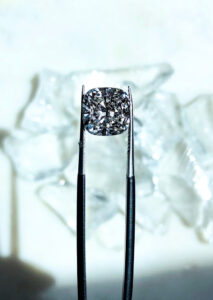
When shopping for a diamond jewelry piece, you may want to spend hours investigating the shape of the gemstone and the other characteristics of the product for an informed decision. However, more and more people from the Hollywood industry also consider the sources of diamonds. Artificial diamonds offer the best possible way to ensure that jewelry manufacturing has no harmful effect on the community, environment or humanity. Because artificial diamonds do not entail mining, the stones have little to no environmental impact.
It is among the reasons why Leonardo DiCaprio, Penelope Cruz and many other celebrities invest in jewelry with lab-made diamonds. The other main reason is the fact that lab grown diamonds shine more than natural diamonds. Leading ethical jewelry brands claim that diamonds made in controlled laboratory environments can be shinier than the stones dug out of mines. It is among the main benefits of growing diamonds in labs under controlled environments.
It is possible to grow diamonds in the colorless and near-colorless range with great clarity. Almost every customer seeks diamonds of those specifications because of the white shine, whereas the stone with a more pronounced yellow color is less popular. It is hard to tell an artificial diamond and a diamond that comes out of a Russian or African mine apart. Why? Because artificial and natural diamonds have the same optical, chemical and physical properties.

Carbon atoms constitute lab-made diamonds and are arranged identically to diamond crystals that emerge from mines. The procedure of manufacturing diamonds under the said conditions replicates the environments where diamonds grow naturally. The process entails subjecting carbon atoms to high levels of pressure and temperature. To be more precise, the so-called HTHP diamond manufacturing method uses 1400°C and a pressure of over 1 million pounds for each square inch. On the other hand, the chemical vapor disposition method entails heating diamond seeds in pressure chambers to over 700°C and combining those with hydrogen and methane gases.
The procedure of producing the gemstone takes a month or two; it should be cut and polished to get the special shine. Producing a diamond artificially requires less energy than mining the stone, so the rates of artificial diamond rings and other synthetic diamond jewelry are 30 to 40% less than their mined counterparts. Besides, celebrities and other customers find it great to be able to reduce their carbon footprints with artificial diamonds.
